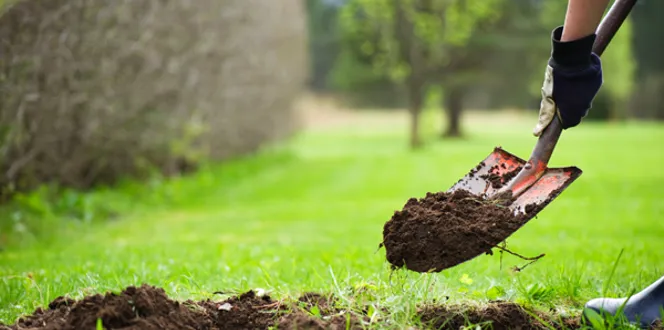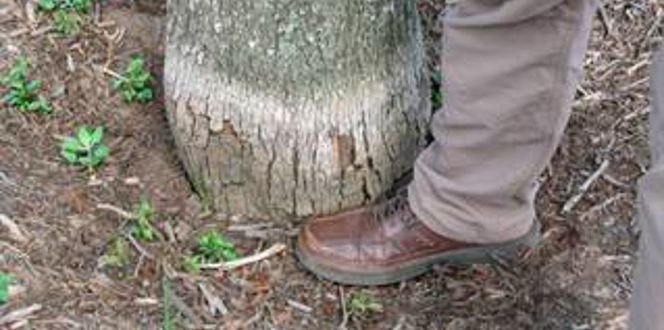With Arbor Day come and gone, you’ve likely been admiring the beauty of your newly planted tree. Its shiny, green leaves. Dreaming of how big its shady canopy will grow in the coming years.
In your planting bliss, make sure you didn’t make the most common tree planting mistake – one that could keep your tree from reaching its full potential.
Check that you didn’t plant your tree too deep.
Below, we’ll help you determine if you did indeed plant your new tree too deeply and how to fix the problem.
How do you know you planted a tree too deep?
An older tree planted too low in the ground can’t help but show symptoms. You may see girdling roots, which grow around another root or trunk, at the base of an incorrectly planted tree. Girdling roots slowly strangle the tree by compressing water and nutrient conductive tissues due to insufficient room to grow. You can often spot symptoms in the tree’s canopy, too, such as branch dieback or the wilting and darkening of trees’ leaves, stems and more, known as leaf necrosis.
Newly planted trees take a few years to show stress from improper planting, but you can spot the problem early on. A sure sign that a young tree is planted too deep is the trunk going straight into the ground like a telephone pole, with no roots in sight.
What happens when you plant a tree too deep?
Tree roots rely on oxygen and moisture from the soil to survive. When the tree is planted too deep, both of these necessities are limited.
Without this help from the soil, the tree becomes vulnerable to stress from severe weather, insects and diseases.
Can you fix a tree planted too deep? How?
In some cases, trees planted in the past 2-3 months can be reset. So don’t worry just yet about your Arbor Day additions! A rule of thumb for replanting is to move the tree’s root flare slightly above the soil.
Mature trees will need the help of your local arborist to fix proper planting. Your arborist will make sure the tree is healthy enough to save and determine the best course of action. Once your arborist gives your tree the green light, the next step is all about soil. Often, a root crown excavation is recommended to remove excess soil. Vertical mulching also has potential because it alleviates soil compaction and allows for more nutrient rich soil.





